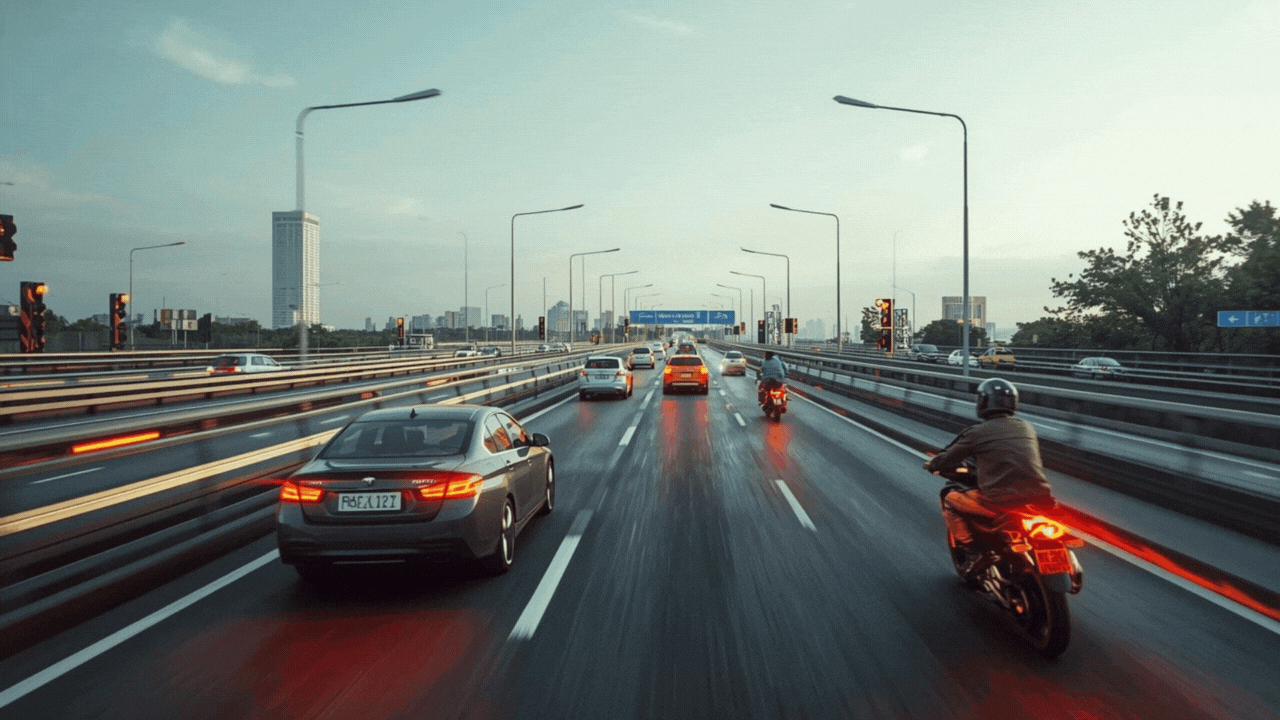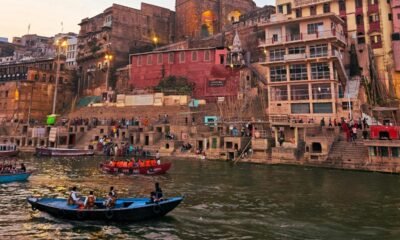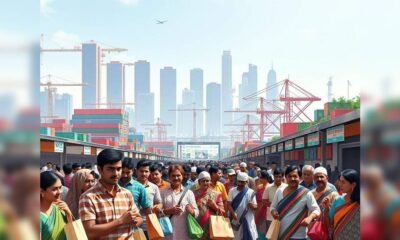Travel Guides & Articles
Now Croatia Unifies Australia, and India to Join the Cruise Revolution: Sustainable Travel and New Ports Offer Unforgettable Experiences

Tuesday, July 22, 2025
The allure of stepping off a cruise ship and exploring a new port is unparalleled. Whether travelers are drawn to vibrant cultural experiences, tantalizing culinary offerings, exhilarating hikes, or peaceful paddling adventures, these excursions offer a unique way to experience new destinations. However, with the rising concerns of over-tourism in some of Europe’s busiest cruise ports, it is reassuring to see a number of destinations working hard to expand their infrastructure to accommodate the increasing demand for cruise tourism in a more sustainable way. One such example is the city of Newcastle in New South Wales, Australia, where efforts are underway to develop a robust cruise market over the next decade. With the Port Authority’s plans for expanding the cruise industry into Newcastle Harbour, the city is poised to become a prominent player in the Australian cruise market.
Newcastle’s Strategic Efforts to Capture the Cruise Market
The Port Authority of New South Wales recently announced plans to hire a dedicated cruise coordinator who will work closely with cruise lines to expand their itineraries, enabling passengers to explore the best of the Hunter and Central Coast regions. This initiative is a promising step toward diversifying the experiences available to cruise passengers, offering them the chance to enjoy winery visits, historic architecture walks, and breathtaking coastal national park hikes. These additions not only elevate the traveler experience but also provide significant economic opportunities for local businesses and communities. As Port Authority of NSW CEO, John McKenna, pointed out, the expansion of the cruise market is beneficial for both the tourists, who will be provided with unforgettable experiences, and the local economy, which stands to gain from the increased tourism spending.
By enhancing Newcastle’s offerings as a cruise destination, the city is positioning itself as a key player in the global cruise industry, helping to ease the pressures felt by more overcrowded cruise ports while simultaneously capitalizing on the economic benefits that cruising brings. This strategy reflects a growing trend toward expanding cruise options to lesser-known yet equally captivating destinations that can provide rich, immersive travel experiences without contributing to the negative aspects of overtourism.
Broome’s Push to Become an International Cruise Gateway
On the west coast of Australia, the city of Broome in the Kimberley region is also making significant strides in establishing itself as a vital hub for cruise tourism. With the West Australian government pledging $500,000 toward the development of a new international passenger terminal, Broome is on track to become an essential gateway for cruise ships sailing from northern Australia. Joel Katz, from the Cruise Lines International Association (CLIA), noted that an international terminal in Broome will open up new possibilities for international cruising in Western Australia, making it a key first port of call for ships arriving from international destinations.
Broome’s entry into the cruise market is an important step toward spreading cruise tourism beyond the well-known, heavily visited cities. The establishment of Broome as a port for international cruises will not only boost the local economy but also help diversify Australia’s cruise industry. With stunning beaches, unique cultural experiences, and proximity to world-renowned natural wonders such as the Bungle Bungles, Broome offers an experience that is distinctly different from Australia’s more traditional cruise destinations. As such, Broome is primed to attract a new wave of travelers seeking something off the beaten path.
India’s Growing Cruise Infrastructure: Expanding Ports and New Opportunities
The cruise industry is also gaining momentum in India, with major developments in the country’s port infrastructure aimed at catering to both domestic and international cruise passengers. The International Cruise Terminal Station in Mumbai, which opened in April, is designed to accommodate 1,000 ships and 1.2 million passengers annually by 2030. This ambitious project is part of India’s broader efforts to establish itself as a prominent player in the global cruise tourism market. Additionally, the recent opening of the Visakhapatnam International Cruise Terminal on India’s east coast marks another milestone in the country’s growing cruise offerings.
This new terminal in Visakhapatnam now offers cruise services connecting the city to Chennai and Puducherry, and there are plans to expand the routes to include international destinations such as Colombo, Thailand, Malaysia, and Singapore. The Indian government’s efforts to build modern, high-capacity terminals reflect a strategic push to capture the growing cruise market, both for inbound international travelers and for domestic tourism. As global tourism continues to evolve, India’s emerging cruise infrastructure will provide new opportunities for travelers to explore the country’s rich cultural heritage, stunning coastline, and vibrant cities.
The Economic Benefits of Expanding Cruise Tourism
The economic benefits of expanding cruise tourism are substantial. The Cruise Lines International Association (CLIA) and the Australian Cruise Association estimate that each cruise passenger spends, on average, $455 per day onshore. When ships start or end their voyages at a port, the spending often increases, as hotel stays, meals, and local excursions are factored into the overall tourism spend. This makes the development of new cruise ports a sound financial decision for any destination looking to stimulate its economy and attract international travelers.
In addition to direct spending by cruise passengers, the establishment of new cruise ports also creates jobs in various sectors, including transportation, hospitality, retail, and local services. This influx of visitors can significantly improve the livelihoods of those working in tourism-related industries and offer opportunities for local businesses to expand and grow.
For example, the development of new cruise terminals can help distribute the influx of visitors more evenly across the country, reducing overcrowding in popular locations. By creating more cruise hubs in different regions, the pressure on overburdened tourist destinations can be alleviated, and visitors can be encouraged to explore less-visited but equally stunning areas. This is particularly important in countries like Croatia, where popular cruise ports such as Dubrovnik have become overcrowded, impacting both the local community and the visitor experience.
A Shift Toward Smaller, Less Crowded Ports: Šibenik, Croatia
As the demand for cruise tourism grows, some smaller, lesser-known ports are capitalizing on the opportunity to attract cruise ships. One such destination is Šibenik, a medieval town on the Adriatic coast of Croatia. Historically overshadowed by larger cities along the Dalmatian Coast, Šibenik is positioning itself as a new cruise hub for smaller ships, offering an alternative to the overcrowded streets of Dubrovnik. Starting in 2026, small-ship operator Unforgettable Croatia will offer 36 cruises that embark and disembark from Šibenik, introducing travelers to the town’s rich history and unique charm.
Šibenik’s relatively small size and off-the-beaten-path location provide an antidote to the pressures of overtourism, offering a more intimate and less crowded experience for those looking to explore Croatia’s coastal beauty without the overwhelming crowds. As more cruise lines look to reduce congestion at popular ports, smaller destinations like Šibenik are emerging as viable alternatives that can offer a more serene and authentic experience for visitors.
A Balanced Approach to Cruise Tourism
The growing trend of expanding cruise offerings into less-visited destinations and improving port infrastructure in popular cities reflects a more sustainable approach to tourism. By diversifying the destinations where cruises dock and spreading out the volume of visitors, local communities can reap the economic benefits of tourism without experiencing the negative side effects of overcrowding. This strategy not only benefits passengers, who get to explore new places with a more authentic experience, but also helps preserve the cultural and environmental integrity of major tourist cities.
Cruise lines, port authorities, and local governments all have a role to play in ensuring that tourism remains a sustainable driver of economic growth. By investing in infrastructure, promoting lesser-known ports, and focusing on providing unique cultural and natural experiences, the cruise industry can continue to thrive while mitigating the challenges of overtourism.
Conclusion: The Future of Cruise Tourism
The expansion of cruise tourism to new destinations and the development of modern, sustainable port infrastructure mark a significant shift in how the global tourism industry operates. By focusing on cultural authenticity and providing more diversified travel experiences, the cruise industry has the potential to contribute positively to both local economies and the environment. As seen in places like Puerto Rico, Broome, and Šibenik, the future of cruise tourism lies in offering passengers memorable experiences in destinations that are both accessible and sustainable. As more ports around the world embrace this approach, the cruise tourism sector is poised to continue its growth, benefiting both travelers and the communities they visit.
Tags: Broome Australia, central coast, Cruise Experiences, cruise tourism, cruise travel expansion, cultural tourism, Eco-friendly tourism, Global cruise market, Hunter Coast, India cruise infrastructure, international cruising, new cruise ports, Newcastle Australia, Over-tourism, port expansion, Šibenik Croatia, sustainable travel, tourism development, tourism economy
Travel Guides & Articles
Breaking News Live Updates: IndiGo airline issues travel advisory for Leh, asks passengers to rebook or claim refunds

Orange weather warning for NCR
The India Meteorological Department (IMD) upgraded its weather warning to orange across Delhi and the National Capital Region, urging residents to prepare for heavy showers. Officials said the rainfall was being driven by the monsoon in combination with an unusually active western disturbance, which has also brought downpours to Himalayan states.
Temperatures dropped to 24–25 degrees Celsius, but the fall in mercury did little to ease the problems caused by clogged roads and flooding. Commuters were seen navigating waist-deep water in parts of the city, while pedestrians struggled to move through submerged streets.
Gurugram faces intense rainfall
Gurugram was hit hardest. Between 3 pm and 7 pm, the city received over 100 mm of rain. Stretches near Hero Honda Chowk, Patel Nagar and Signature Bridge were completely inundated. The service lane of the Dwarka Expressway had to be shut as water levels rose sharply, and the expressway’s drainage system collapsed under pressure.
By 6 pm, more than 90 mm of rainfall had been recorded, leaving vehicles stranded and traffic backed up at the Delhi-Gurugram border along National Highway-8. The downpour, which lasted for hours, paralysed key roads connecting Dwarka to Kherki Daula and several sectors of Gurugram.
Work from home and online classes advised
The District Disaster Management Authority (DDMA) asked private offices and institutions to shift to remote work on Tuesday. It also directed schools to move to online classes. In its advisory, the Gurgaon deputy commissioner said the order aimed to reduce traffic jams, ensure public safety, and minimise disruption after the city received over 100 mm of rain in just five hours.
The circular, sent late on Monday to the District Information and Public Relations Office, also tasked education officers with ensuring full compliance by both government and private schools.
Officials urged residents to stay indoors as much as possible and avoid unnecessary travel. They advised those who needed to step out to follow weather updates closely. Emergency services were placed on standby while authorities continued to assess the situation.
Rain impact across Delhi
Several parts of Delhi, including Akbar Road near India Gate, were pounded by rain. While waterlogging was less severe than in Gurugram, traffic slowed to a crawl during the evening rush as people left their offices.
Authorities confirmed that traffic restrictions on Loha Pul were necessary to prevent risks from the swelling Yamuna.
Travel Guides & Articles
Which Indian Cities Are The Most Dangerous for Road Travel? Check Top 5 in 2023 Report | India News

India’s Most Dangerous Cities for Road Travel: Top 2 Cities Saw a Combined 1,731 Deaths in Just One Year (representational)
India’s roads continue to claim hundreds of lives every year, with certain cities standing out for the sheer scale of fatalities. Delhi, Bengaluru, Jaipur, and Ahmedabad have emerged as the deadliest for motorists, with speeding and reckless driving cited as the leading causes.
In 2023, Ahmedabad recorded 535 deaths due to road accidents, placing it among India’s most dangerous cities for motorists, according to a TOI report. Alarmingly, 462 of these fatalities—nearly 86%—occurred on straight roads, highlighting a disturbing trend. Officials say this is due to the city’s long, open stretches and relatively fewer blind curves, which encourage drivers to overspeed. SG Highway, dotted with bridges, has been identified as a significant contributor to the high toll.
“Speeding over the limit and reckless driving are cited as the main culprits,” officials noted.
Accidents on bridges formed the next major category, with 77 crashes claiming 41 lives—around 7% of the city’s total road deaths. The tragic Iskcon flyover accident, which killed nine people and injured 13, was the most high-profile case. Other unusual fatalities included one person falling into a pothole and two deaths on an under-construction road.
Controlled vs Uncontrolled Roads
The report also sheds light on where fatalities occur: 21 deaths were recorded on roads with traffic lights, 32 on stretches managed by police, and a staggering 205 on uncontrolled roads. This ranking puts Ahmedabad fifth nationwide in deaths on uncontrolled roads, behind Mumbai (336), Indore (258), Delhi (241), and Bengaluru (241).
Delhi tops the list with 938 fatalities, followed by Bengaluru with 793, and Jaipur with 718 deaths. Ahmedabad, with 535 road deaths, underscores the need for stricter enforcement and public awareness campaigns to curb reckless driving.
Travel Guides & Articles
When Digital Systems Don’t Travel

By Poorvi Yerrapureddy and Aditi Shah
The Karnataka Platform-Based Gig Work (Social Security and Welfare) Bill, 2025 has prompted fresh debates around the architecture of social protection in India. The legislation is historic in its recognition of platform labour, but the scope of the Bill remains narrow as India’s wider unorganised sector remains outside its ambit.
It is a step in the right direction, but its selective coverage exposes a larger systemic gap – India continues to lack a comprehensive framework that recognises mobility and precarity across the unorganised sector as a whole.
For decades, India’s social security provisions have excluded various groups of citizens. Today, however, the Government appears to commit to a more inclusive disbursement of such benefits. The e-Shram portal was launched in an effort to build a national database of unorganised workers, linking them to welfare entitlements via a unique ID. But in its current form, it functions more as a registry than an integrated delivery platform, with little capacity to link registrations to state-specific benefits. Unorganised workers in various parts of the country are being encouraged to register themselves on the online portal, which is touted as a one-stop shop for workers’ welfare entitlements.
Historically, the portability of social security benefits has not been a policy priority. These benefits are afforded to citizens in ways that assume that they are stationary. As a result, migrants who constitute 30% of India’s population – moving within, into, or out of states – are left out or find themselves lost in a bureaucratic maze.
Systems for welfare provision, housed across Central and State Governments, must account for the movement citizens engage in for a host of reasons, including for work or marriage. Advancing social security portability ensures that such movement is more easily facilitated, without citizens having to go to great lengths to procure benefits or giving up entirely. While the question of portability is picking up steam, targeted and intentional interventions must be realised for it to become a meaningful reality of our welfare systems.
Centre-State Coordination Is A Priority
In theory, portability is purported as the unparalleled promise of digital welfare reform – seamless, borderless, citizen-centric. Yet for India’s internal migrants, this promise often disintegrates at the very first point of contact. Structural challenges embedded within both the design and implementation of digital welfare systems render portability not just difficult, but implausible. When mobility is treated as an exception rather than a norm, entire populations fall through the cracks.
At the heart of the issue is the fragmented coordination between Central and State Governments. India’s welfare architecture resembles a federation of fiefdoms, each state retaining autonomy over eligibility norms, entitlements, and implementation protocols. Welfare schemes like One Nation One Ration Card (ONORC) and e-Shram rely on the assumption that a centrally maintained database will be adopted and operationalised uniformly across India. Migrants thus move through a patchwork of systems that interpret central schemes through local bureaucratic lenses.
Take e-Shram for instance: while the portal facilitates centralised registration of unorganised workers, it does not guarantee access to any specific benefit. Whether this data translates into actual entitlements depends on state agencies – many of which lack clear protocols or incentives to operationalise the registry.
In the context of the PDS, as well, migrants have historically had trouble receiving food security benefits, owing to linkages with Fair Price Shops that are closest to one’s home address. In the absence of shared benchmarks or portability safeguards, registration becomes symbolic rather than functional. What results is not true portability, but a form of welfare roulette – where access is governed by how a state chooses to act on the Centre’s promise rather than on citizen need.
Both within and across state boundaries, there need to be provisions for rendering welfare governance systems interoperable. Instead of submitting to extremes of total centralisation or irreconcilable fragmentation, states must securely share data with one another to the extent necessary.
A key bottleneck is the absence of common data standards or protocols that allow databases to communicate. But this is not merely a technical failure, as states often resist integration to retain autonomy over eligibility and entitlement delivery. Only when that changes are migrant populations likely to move without fear of losing access to the welfare services provided by government systems.
For interoperable systems to become a reality, it is important to look at how citizen data will be governed, and where the decision-making power will reside. Strict boundaries around the State and Central Governments’ duties and contributions must be recorded. Although State realisations of Central schemes speak better to localised citizen realities, they leave little room for transferability when citizens migrate.
Establishing a shared accountability framework that defines a common minimum core of entitlements across the country, while allowing states the flexibility to layer additional, context-specific benefits will be more pragmatic. Such a model ensures that migrant workers retain access to foundational welfare guarantees regardless of mobility, while respecting the political and economic autonomy of states. For portability to function meaningfully, clarity around what is Centrally guaranteed and how it is locally administered must be embedded in both data governance and policy design.
Redefining The Intermediary
Intermediaries have historically served as bridges between citizens and the state. ASHAs and Anganwadi workers have long translated opaque public healthcare and food schemes into navigable realities.
However, for India’s migrants this bridge is ephemeral: moulded and marauded through repeated movement. Intermediaries are rooted in place and bound by familiar community ties, whereas migrants are not. As people move, they detach from these relational anchors. What emerges is a double-bind: the state’s digital infrastructure lacks continuity, and the human layer that might compensate for it lacks mobility.
To continue aiding its adoption and trustworthiness for large groups of the Indian population, including internal migrants, human touchpoints remain crucial. While the management of moving intermediaries is a bureaucratic nightmare that is likely to yield sparse benefits for all stakeholders, there is merit in considering the employment of individuals across cities, towns, and villages that cater specifically to the needs of migrants.
Specialised training can be provided to these intermediaries who can then be stationed at Jan Seva Kendras (Public Service Centres) across the country. The power of having a person help another out is not to be underestimated, especially in a country like India, where even the migrant, in many ways isolated in their experience, is never too distanced from friendly faces.
Advertisements
Technical Barriers Breed Distrust
Issues of access and agency on the citizens’ end are further compounded by the difficulty of using government websites and other digital interfaces through which welfare-related information is provided or entitlements disbursed.
Technical barriers reveal flaws in how accessibility has been conceptualised; this includes biometric failures, inconsistencies in Aadhar linkages, and mobile-unfriendly interfaces which create additional layers of exclusion for citizens who may not possess adequate digital literacy.
Over time, repeated points of friction erode the faith that citizens have in the digital systems, creating trust fractures. A system built for efficiency ends up offloading its complexity to those least equipped to navigate it. When a migrant is denied rations because a fingerprint authentication is lagging, the issue is not technological, but existential.
Beyond being a design failure, this is a deeper mismatch between how state systems imagine the citizen and how a citizen actually moves through the state. Migrants challenge the very logic of place-based service delivery, yet our digital welfare infrastructure remains territorially tethered.
Government welfare platforms must be overhauled at various levels – from functioning in low-network areas to building comfort and safety through their visual design. For example, allowing multiple users to log in from the same device, or using reassuring language to communicate network-related delays can help build citizens’ trust in these platforms.
However, to build trust, we need more than technical fixes, we need a reimagination of digital systems as mobile and responsive to the temporality of migration. Until then, the idea of portability will remain a policy ideal more than a lived reality; an infrastructure that excludes precisely because it does not move with the people it was built for.
Welfare Systems Must Align With Migrant Realities
For too long, digital welfare has been built around administrative ease rather than citizen experience. The result is a disconnect between governance and the urgent, unpredictable realities of internal migration. A digital welfare system that moves with migrants cannot simply replicate static structures in digital form – it must be fundamentally reoriented to reflect the fluidity of migrant life.
Closing this gap means designing systems that are not just technically integrated, but also procedurally adaptable. They must address coordination failures, missing documentation and evolving identities over time. Digital welfare requires a shift in perspective: from building systems for people, to building systems with people on the move. Systems must evolve from asking “Do you qualify?” to “How do we keep you in?”.
One promising direction lies in reimagining verification not as a one-time gatekeeping mechanism, but as a continuum of trust-building. Building digital feedback loops, enabling grievance redressal in mobile contexts, and allowing migrants to track or contest decisions in real time can begin to close the accountability gap.
Some non-state actors, such as Haqdarshak, have attempted to bridge this gap by creating unified application layers for welfare access. Their success points to what government platforms can also achieve when designed with interoperability and mobility at the core.
Ultimately, aligning technology with migrant realities is not only about patching broken pipes in welfare delivery. It demands re-engineering the state’s digital infrastructure to remember movement not as an aberration, but as a central fact of life. Only then can digital welfare fulfil its inclusive mandate, not in principle, but in practice.
Also Read:
Aditi Shah works as the Manager at Aapti Institute: a research institution that aims to highlight Global South perspectives and challenges, while calibrating research to evolve stakeholders’ priorities.
Poorvi Yerrapureddy is a Senior Analyst at Aapti Institute.
Support our journalism:
For You
Source link
-

 Business4 days ago
Business4 days agoThe Guardian view on Trump and the Fed: independence is no substitute for accountability | Editorial
-
Tools & Platforms3 weeks ago
Building Trust in Military AI Starts with Opening the Black Box – War on the Rocks
-

 Ethics & Policy1 month ago
Ethics & Policy1 month agoSDAIA Supports Saudi Arabia’s Leadership in Shaping Global AI Ethics, Policy, and Research – وكالة الأنباء السعودية
-

 Events & Conferences3 months ago
Events & Conferences3 months agoJourney to 1000 models: Scaling Instagram’s recommendation system
-

 Jobs & Careers2 months ago
Jobs & Careers2 months agoMumbai-based Perplexity Alternative Has 60k+ Users Without Funding
-

 Funding & Business2 months ago
Funding & Business2 months agoKayak and Expedia race to build AI travel agents that turn social posts into itineraries
-

 Education2 months ago
Education2 months agoVEX Robotics launches AI-powered classroom robotics system
-

 Podcasts & Talks2 months ago
Podcasts & Talks2 months agoHappy 4th of July! 🎆 Made with Veo 3 in Gemini
-

 Education2 months ago
Education2 months agoAERDF highlights the latest PreK-12 discoveries and inventions
-

 Podcasts & Talks2 months ago
Podcasts & Talks2 months agoOpenAI 🤝 @teamganassi



















